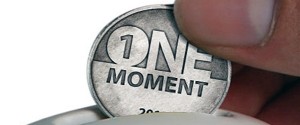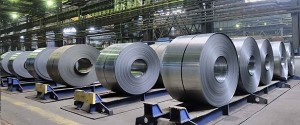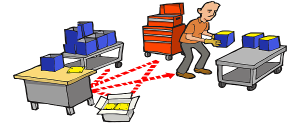
Processing activities are typically viewed as value added. It is the manufacturing processes that add value to the product and to the customer. Despite this, the process isn’t valuable to the customer. The resultant change to the product is what may be valuable to the customer. This is an important distinction, because it is critical to assess every activity when eliminating waste. It is easy to assume a process in the middle of a production line is essential, but under examination, many processes are found to unnecessary or overly complicated.
Simplifying processes is critical to the lean methodology, and it is at the core of eliminating processing waste. Each activity in the production process should be assessed in detail. The activity must add value to the customer, and must be an activity that cannot be accomplished automatically. Otherwise, the activity should be eliminated or consolidated with other processes. As with the other wastes, it is important to examine every activity or process through the lens of lean. For this reason, it is preferable to look at all processes as potential waste. This differs from the view of some lean practitioners who describe this waste as over processing, and encourage the acceptance of processing as value added.
Causes of Processing
The primary cause of some processing steps is a failure to recognize processing as a waste. Every process in the manufacturing operation is often assumed to be value added. This leads individuals to overlook processing as a source of waste. The assumption is that the process wouldn’t be there if it wasn’t necessary. In reality, many processes are unnecessary.
Another common cause of processing is complexity. The more complicated a process is, the more likely there will be unnecessary steps.
In an office environment, processing is a very common waste. This often comes in the form of reviews and approvals needed to make decisions. Many steps in the approval process are likely to be steps that do not add value. There may be necessary controls to ensure quality, fiscal responsibility and legal compliance, but each of these activities is inherently wasteful. Streamlining or eliminating processing steps that add no vale can dramatically speed up an operation and reduce cost.
Results of Processing
As with the other wastes, processing adds costs. It does this through the expenditures of materials and labor to complete the additional processing steps. Each processing step introduces an opportunity for error. If you only have one activity to make a part, there’s limited chance to introduce a defect. If you have hundreds of steps, each step will introduce opportunities for errors. Processing also slows an operation and extends lead times. Each step takes time, and more importantly, the wait time between steps greatly increases lead times.
In an office environment, the increase in lead times due to processing steps is incredible. Many tasks that require only a minute or two of actual work can take weeks or months to complete. The more consolidated a process is, the faster it can be executed and completed.
Solutions for Processing
The first step in eliminating processing is to recognize that processing activities can be wasteful. Most professionals overlook processing as a waste. Challenging these assumptions is critical to making your lean implementation successful.
The next step is to look for ways to consolidate processes. If an activity is essential, look for ways it can be combined with other processes. This strategy often leads to the construction of work cells that combine operations.
One of the most useful tools in eliminating processing is Value Stream Mapping. Value Stream Mapping is a technique where a complete process is diagramed in great detail, with processing times, queue times and batch quantities listed at each step. Completing a Value Stream Map will often identify processing steps that are extremely costly, both in terms of resource costs and lead time increases.
In an office environment, Value Stream Mapping is an extremely valuable tool. Many people will fail to recognize the complexity in routine processes because they only interact with a few steps in the process. By mapping the processes, it can become clear that some activities are very process intensive with very little value added.




